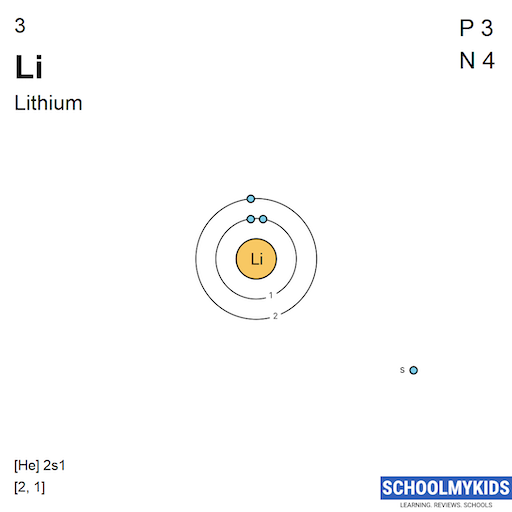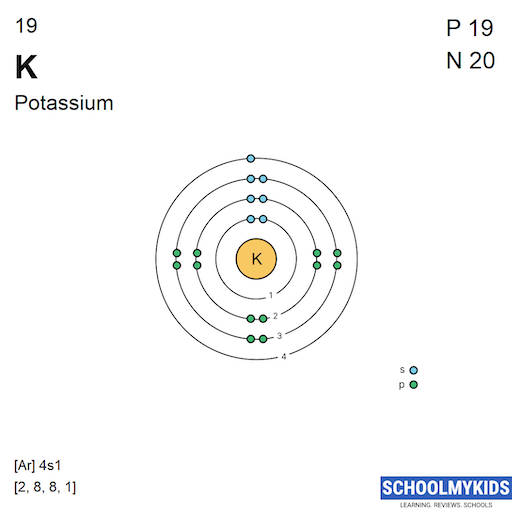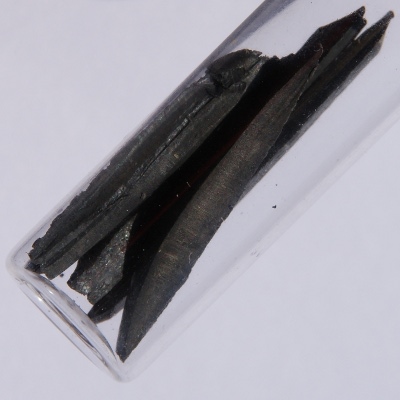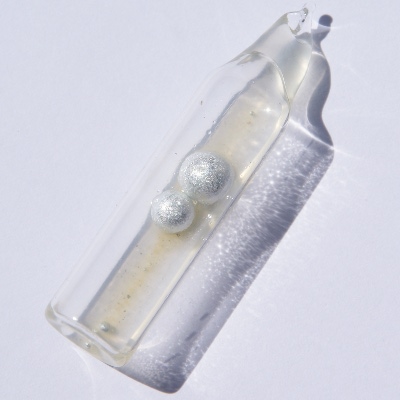Compare Lithium vs Potassium: Periodic Table Element Comparison Table and Properties
Compare the elements Lithium and Potassium on the basis of their properties, attributes and periodic table facts. Compare elements - Lithium and Potassium comparison table side by side across over 90 properties. All the elements of similar categories show a lot of similarities and differences in their chemical, atomic, physical properties and uses. These similarities and dissimilarities should be known while we study periodic table elements. You can study the detailed comparison between Lithium vs Potassium with most reliable information about their properties, attributes, facts, uses etc. You can compare Li vs K on more than 90 properties like electronegativity, oxidation state, atomic shells, orbital structure, Electronaffinity, physical states, electrical conductivity and many more. This in-depth comparison helps students, educators, researchers, and science enthusiasts understand the differences and similarities between Lithium and Potassium.
Lithium and Potassium Comparison
Here's a detailed comparison between Lithium (Li) and Potassium (K), focusing on their position in the periodic table, physical and chemical properties, stability, and uses.
Facts - Basic Element Details
| Name | Lithium | Potassium |
|---|---|---|
| Atomic Number | 3 | 19 |
| Atomic Symbol | Li | K |
| Atomic Weight | 6.941 | 39.0983 |
| Phase at STP | Solid | Solid |
| Color | Silver | Silver |
| Metallic Classification | Alkali Metal | Alkali Metal |
| Group in Periodic Table | group 1 | group 1 |
| Group Name | lithium family | lithium family |
| Period in Periodic Table | period 2 | period 4 |
| Block in Periodic Table | s -block | s -block |
| Electronic Configuration | [He] 2s1 | [Ar] 4s1 |
| Electronic Shell Structure (Electrons per shell) | 2, 1 | 2, 8, 8, 1 |
| Melting Point | 453.69 K | 336.53 K |
| Boiling Point | 1615 K | 1032 K |
| CAS Number | CAS7439-93-2 | CAS7440-09-7 |
| Neighborhood Elements | Neighborhood Elements of Lithium | Neighborhood Elements of Potassium |
History
| Parameter | Lithium | Potassium |
|---|---|---|
| History | The element Lithium was discovered by A. Arfwedson in year 1817 in Sweden. Lithium derived its name the Greek word lithos, meaning 'stone'. | The element Potassium was discovered by H. Davy in year 1807 in United Kingdom. Potassium derived its name from New Latin potassa, 'potash' (kalium in Latin). |
| Discovery | A. Arfwedson (1817) | H. Davy (1807) |
| Isolated | W. T. Brande (1821) | H. Davy (1807) |
Presence: Abundance in Nature and Around Us
Parts per billion (ppb) by weight / by atoms (1ppb =10^-7 %)
| Property | Lithium | Potassium |
|---|---|---|
| Abundance in Universe | 6 / 1 | 3000 / 100 |
| Abundance in Sun | 0.06 / 0.01 | 4000 / 100 |
| Abundance in Meteorites | 1700 / 4600 | 710000 / 370000 |
| Abundance in Earth's Crust | 17000 / 50000 | 15000000 / 7800000 |
| Abundance in Oceans | 180 / 160 | 416000 / 65800 |
| Abundance in Humans | 30 / 27 | 2000000 / 320000 |
Crystal Structure and Atomic Structure
| Property | Lithium | Potassium |
|---|---|---|
| Atomic Volume | 13.02 cm3/mol | 45.68 cm3/mol |
| Atomic Radius | 167 pm | 243 pm |
| Covalent Radius | 134 pm | 196 pm |
| Van der Waals Radius | 182 pm | 275 pm |
Atomic Spectrum - Spectral Lines | ||
| Emission Spectrum |  |  |
| Absorption Spectrum |  |  |
| Lattice Constant | 351, 351, 351 pm | 532.8, 532.8, 532.8 pm |
| Lattice Angle | π/2, π/2, π/2 | π/2, π/2, π/2 |
| Space Group Name | Im_ 3m | Im_ 3m |
| Space Group Number | 229 | 229 |
| Crystal Structure | Body Centered Cubic  | Body Centered Cubic  |
Atomic and Orbital Properties
| Property | Lithium | Potassium |
|---|---|---|
| Atomic Number | 3 | 19 |
| Number of Electrons (with no charge) | 3 | 19 |
| Number of Protons | 3 | 19 |
| Mass Number | 6.941 | 39.0983 |
| Number of Neutrons | 4 | 20 |
| Shell structure (Electrons per energy level) | 2, 1 | 2, 8, 8, 1 |
| Electron Configuration | [He] 2s1 | [Ar] 4s1 |
| Valence Electrons | 2s1 | 4s1 |
| Oxidation State | 1 | 1 |
| Atomic Term Symbol (Quantum Numbers) | 2S1/2 | 2S1/2 |
| Shell structure |  |  |
Isotopes and Nuclear Properties
Lithium has 2 stable naturally occuring isotopes while Potassium has 2 stable naturally occuring isotopes.
| Parameter | Lithium | Potassium |
|---|---|---|
| Known Isotopes | 3Li, 4Li, 5Li, 6Li, 7Li, 8Li, 9Li, 10Li, 11Li, 12Li | 32K, 33K, 34K, 35K, 36K, 37K, 38K, 39K, 40K, 41K, 42K, 43K, 44K, 45K, 46K, 47K, 48K, 49K, 50K, 51K, 52K, 53K, 54K, 55K |
| Stable Isotopes | Naturally occurring stable isotopes: 6Li, 7Li | Naturally occurring stable isotopes: 39K, 41K |
| Neutron Cross Section | 0.045 | 2.1 |
| Neutron Mass Absorption | - | 0.0018 |
Chemical Properties: Ionization Energies and electron affinity
| Property | Lithium | Potassium |
|---|---|---|
| Valence or Valency | 1 | 1 |
| Electronegativity | 0.98 Pauling Scale | 0.82 Pauling Scale |
| Oxidation State | 1 | 1 |
| Electron Affinity | 59.6 kJ/mol | 48.4 kJ/mol |
| Ionization Energies | 1st: 520.2 kJ/mol 2nd: 7298.1 kJ/mol 3rd: 11815 kJ/mol | 1st: 418.8 kJ/mol 2nd: 3052 kJ/mol 3rd: 4420 kJ/mol 4th: 5877 kJ/mol 5th: 7975 kJ/mol 6th: 9590 kJ/mol 7th: 11343 kJ/mol 8th: 14944 kJ/mol 9th: 16963.7 kJ/mol 10th: 48610 kJ/mol 11th: 54490 kJ/mol 12th: 60730 kJ/mol 13th: 68950 kJ/mol 14th: 75900 kJ/mol 15th: 83080 kJ/mol 16th: 93400 kJ/mol 17th: 99710 kJ/mol 18th: 444880 kJ/mol 19th: 476063 kJ/mol |
Physical Properties
Lithium (0.535 g/cm³) is less dense than Potassium (0.856 g/cm³). This means that a given volume of Potassium will be heavier than the same volume of Lithium. Potassium is about 60 denser than Lithium
| Property | Lithium | Potassium |
|---|---|---|
| Phase at STP | Solid | Solid |
| Color | Silver | Silver |
| Density | 0.535 g/cm3 | 0.856 g/cm3 |
| Density (when liquid (at melting point)) | 0.512 g/cm3 | 0.828 g/cm3 |
| Molar Volume | 13.02 cm3/mol | 45.68 cm3/mol |
Mechanical and Hardness Properties
| Property | Lithium | Potassium |
|---|---|---|
Elastic Properties | ||
| Young Modulus | 4.9 | - |
| Shear Modulus | 4.2 GPa | 1.3 GPa |
| Bulk Modulus | 11 GPa | 3.1 GPa |
| Poisson Ratio | - | - |
Hardness - Tests to Measure of Hardness of Element | ||
| Mohs Hardness | 0.6 MPa | 0.4 MPa |
| Vickers Hardness | - | - |
| Brinell Hardness | - | 0.363 MPa |
Thermal and Electrical Conductivity
| Property | Lithium | Potassium |
|---|---|---|
Heat and Conduction Properties | ||
| Thermal Conductivity | 85 W/(m K) | 100 W/(m K) |
| Thermal Expansion | 0.000046 /K | - |
Electrical Properties | ||
| Electrical Conductivity | 11000000 S/m | 14000000 S/m |
| Resistivity | 9.4e-8 m Ω | 7e-8 m Ω |
| Superconducting Point | - | - |
Magnetic and Optical Properties
| Property | Lithium | Potassium |
|---|---|---|
Magnetic Properties | ||
| Magnetic Type | Paramagnetic | Paramagnetic |
| Curie Point | - | - |
| Mass Magnetic Susceptibility | 2.56e-8 m3/kg | 6.7e-9 m3/kg |
| Molar Magnetic Susceptibility | 1.78e-10 m3/mol | 2.62e-10 m3/mol |
| Volume Magnetic Susceptibility | 0.00000137 | 0.00000574 |
Optical Properties | ||
| Refractive Index | - | - |
Acoustic Properties | ||
| Speed of Sound | 6000 m/s | 2000 m/s |
Thermal Properties - Enthalpies and thermodynamics
| Property | Lithium | Potassium |
|---|---|---|
| Melting Point | 453.69 K | 336.53 K |
| Boiling Point | 1615 K | 1032 K |
| Critical Temperature | 3223 K | 2223 K |
| Superconducting Point | - | - |
Enthalpies | ||
| Heat of Fusion | 3 kJ/mol | 2.33 kJ/mol |
| Heat of Vaporization | 147 kJ/mol | 76.9 kJ/mol |
| Heat of Combustion | -298 J/(kg K) | -182 J/(kg K) |
Regulatory and Health - Health and Safety Parameters and Guidelines
| Parameter | Lithium | Potassium |
|---|---|---|
| CAS Number | CAS7439-93-2 | CAS7440-09-7 |
| RTECS Number | RTECSOJ5540000 | RTECSTS6460000 |
| DOT Hazard Class | 4.3 | 4.3 |
| DOT Numbers | 1415 | 2257 |
| EU Number | - | - |
| NFPA Fire Rating | 2 | 3 |
| NFPA Health Rating | 3 | 3 |
| NFPA Reactivity Rating | 2 | 2 |
| NFPA Hazards | Water Reactive | Water Reactive |
| AutoIgnition Point | 179 °C | 440 °C |
| Flashpoint | - | - |
Compare Lithium and Potassium With Other Elements
Compare Lithium and Potassium with other elements of the periodic table. Explore howLithium and Potassium stack up against other elements of the periodic table. Use our interactive comparison tool to analyze 90+ properties across different metals, non-metals, metalloids, and noble gases. Understanding these differences is crucial for applications in engineering, chemistry, electronics, biology, and material science.

